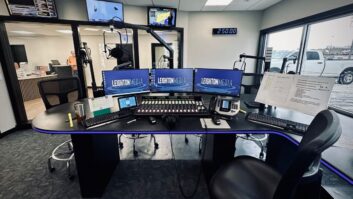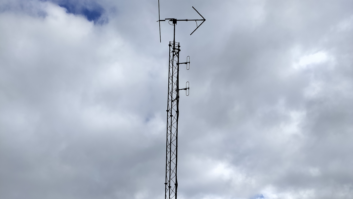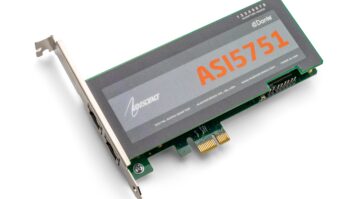
The author is owner/operator of WZPH(LP).
ZEPHYRHILLS, Fla. — WZPH(LP) is a unique radio station in many ways. We hold the world record for 3 million songs in a row, nonstop oldies rock’n roll since March 24, 2005, commercial-free. We are locally owned and have been serving the community without the request of on-air donations.
Being close to the Tampa, Fla., market is challenging, we get crushed in the ratings, as well as coverage area.
For many years, our audio lacked the luster of the powerhouse stations, and it just didn’t seem to shine on the radio dial. The content of our material was good in quality, but by the time the audio was heard on a table radio, it just didn’t sound the same. Our audio chain consisted of an Aphex Compellor, followed by an Aphex Dominator passed into a stereo generator with peak limiter.
[Related: “How to Pick an On-Air Processor”]
No matter what we did with hours of setting changes, the audio either sounded either squashed, or annoyingly raspy to the ear. We needed something different, but with the price tag of the processing of today, we weren’t able to afford the big-ticket processors any time soon.
Our station engineer advised us that there was a product recently released on the market, the JT Communications SEPsoniX processor. It featured simple installation and an affordable cost ($1,100). He said that it contained features such as split-band compressors (so that the low and high frequencies would be processed independently), AGC to maintain gain along with a stereo generator with peak composite limiter (to protect overshoots).
Being located “down the road” from Zephyrhills in Ocala, we contacted Jim Trapani of JT Communications, and he was very accommodating, explaining the simple operation and setup to our engineer. Since he was local, and with the new introduction of the product, he was willing to deliver the SEPsoniX personally and assist our engineer with the installation and settings.
After Jim’s arrival, the installation was rather quick. In the words of our engineer, “I have never had such a simple processor setup until now.”
The processor contains all the necessary adjustments from the front panel, including sufficient LED indicators to let you know how the unit is operating at a glance. Once the input levels were set, the unit performed nicely, and the audio quality seemed to be less squashed yet loudly competitive.
Increasing the audio input did not increase the typical fatiguing audio sound we were experiencing with our earlier processing combo; rather it sounded open and cleaner. The high-frequency limiter that precedes the stereo generator did a good job on the high frequencies, and we did not hear the smearing and “spitting” of the highs that our previous processing failed to resolve.
The composite clipper could be adjusted, from mildly functional to aggressively loud.
The stereo generator produced good separation at multiple frequencies, but we decided to keep the signal mono, as the increased noise that occurs when operating stereo was not beneficial to our already FCC-limited signal.
We spent the next few hours jumping around the dial, listening and comparing our audio to our competitors. Although we did not “jump off” the dial as some stations do, we were quite competitive to the audio quality, and longtime listening did not sound fatiguing to our ears. We wrote a check to seal the deal.
WZPH is in a small metallic building, directly underneath the antenna tower. Lightning is typical during the summer months, and we have added a good amount of grounding to our equipment to avoid casualties.
This past winter we took a hit. Although the transmitter survived, all audio wires that crossed paths were fused. Our engineer was able to replace the damage within a few hours and we were back on the air.
The SEPsoniX contains some lightning protection on the BNC output, and the only damage was the output IC (which is socketed). It is a common part which the engineer had some in his parts bin.
Overall, our investment into the SEPsoniX has resulted in a great-sounding, competitive station without the emptying of the pocketbook. For startup and small-budget stations, this is an excellent choice, and it appears that the SEPsoniX will provide years of great results.
Radio World User Reports are testimonial articles intended to help readers understand why a colleague chose a particular product to solve a technical situation.
For information, contact Jim Trapani at JT Communications in Florida at 1-352-236-0744 or visit www.jtcomms.com.












